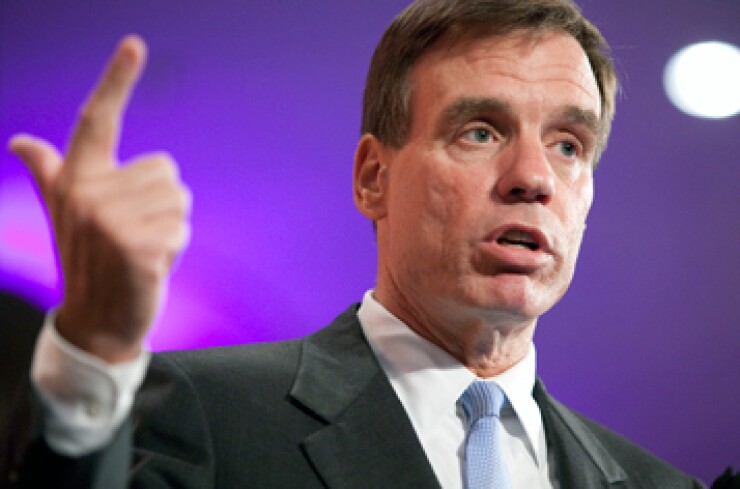
WASHINGTON – The House is scheduled to hold a voice vote Monday on a bill that would treat investment grade and actively traded municipal securities as high quality liquid assets under a liquidity rule banking regulators adopted in 2014.
Rep. Luke Messer, R-Ind., introduced the bill last May and has called it a "commonsense fix to an arbitrary decision by federal regulators" that chose not to include munis as HQLA because they did not think the securities were liquid or easily marketable.
The bipartisan bill, which was co-sponsored by Rep. Carolyn Maloney, D-N.Y., passed the House Financial Services Committee by a vote of 56 to 1 on Nov. 3. Representatives in the committee who supported the bill said it would allow states and cites to use muni bonds to more cost-effectively finance infrastructure.
A spokeswoman for Messer said that while a roll call vote is possible on Monday, voice vote bills usually pass without such a request.
Sens. Chuck Schumer, D-N.Y., Mike Rounds, R-S.D., and Mark Warner, D-Va., have shown interest in introducing a companion bill in the Senate, sources said. A spokeswoman for Warner said if the senator were to introduce a bill, it "would appropriately address financial stability concerns while preserving robust access by states and municipalities to capital markets."
If the House and Senate both pass versions of the bill, there would be a conference between the two chambers to align the legislation before sending it to the president for approval, Messer's spokeswoman said.
The Messer bill would treat munis that are investment grade and actively traded in the secondary market as Level 2A assets under the liquidity rule, the same level as some sovereign debt and government-sponsored debt of Fannie Mae and Freddie Mac. Munis could also account for up to 40% of a bank's HQLA.
The Federal Reserve Board, Office of the Comptroller of the Currency, and the Federal Deposit Insurance Corp. all developed the rule and have mandated banks comply with it by Jan. 1, 2017. The rule requires banks with at least $250 billion of total assets or consolidated on-balance sheet foreign exposures of at least $10 billion to have a high enough liquidity ratio – the amount of HQLA to total net cash outflows – to deal with periods of financial stress. Assets are considered HQLA if they can easily be converted into cash with no loss of value during a period of liquidity stress.
The Fed, responding to complaints from muni groups, proposed amendments in May that would allow a limited number of munis to be treated as HQLA as long as they are, at a minimum, uninsured investment grade general obligation bonds. The bonds would be considered Level 2B, the same as corporate bonds that are liquid and readily marketable, but could only make up 5% of a bank's HQLA.
Muni groups have welcomed Messer's bill and supported the Fed's decision to propose the amendments. But Messer's bill carries more weight than the Fed proposal because the Fed only regulates a small number of institutions while the FDIC and OCC, which have not pursued the Fed's amendments, regulate the majority of larger institutions.





